B-24 Liberator, Lahinch, Co. Clare, July 1943
The small west of Ireland town of Lahinch, Co. Clare awoke on
the morning of 10th July 1943 to the sight of an American bomber
sitting on the strand north of the town.
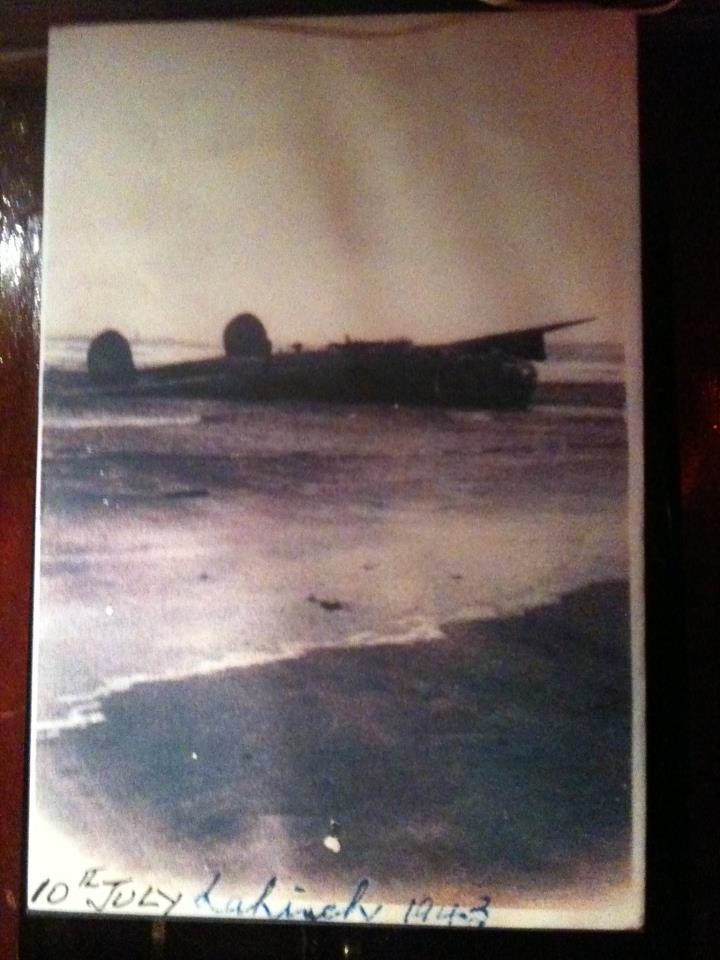 A
large four engine bomber was resting on the beach about a half
mile north of the town center. Locals recorded the time of
landing approximate 7.35 am. The aircraft had been tracked
by various Coast Watching and Gardai stations amongst
others. It had been noticed first, about an hour before
the landing, passing over the town of Kilkee in Co ,
Clare. It then flew up the Shannon river estuary as far as
Lorrha in County Tipperary. The crew, then it seems
thinking they were near the beacon at Derrynacross in County
Fermanagh, Northern Ireland, turned back towards the coast and
found themselves over Lahinch. They were witnessed by some
locals making a low pass, south easterly, past the
village. Turning inland, in poor visibility, 2/Lt Van
Benthuysen brought the aircraft back around to approach the
beach from the north west and touched down just south of the
mouth of the Inagh River around 7.35 am. The tide being
out at the time, the aircraft careened along the sand until the
port wingtip contacted the sand and caused the aircraft to swing
nose first towards the sand dunes, and there coming to a
rest. A propeller had been torn off and in hitting the
fuselage near the pilots side of the cockpit, mercifully not
injuring anyone on board.
A
large four engine bomber was resting on the beach about a half
mile north of the town center. Locals recorded the time of
landing approximate 7.35 am. The aircraft had been tracked
by various Coast Watching and Gardai stations amongst
others. It had been noticed first, about an hour before
the landing, passing over the town of Kilkee in Co ,
Clare. It then flew up the Shannon river estuary as far as
Lorrha in County Tipperary. The crew, then it seems
thinking they were near the beacon at Derrynacross in County
Fermanagh, Northern Ireland, turned back towards the coast and
found themselves over Lahinch. They were witnessed by some
locals making a low pass, south easterly, past the
village. Turning inland, in poor visibility, 2/Lt Van
Benthuysen brought the aircraft back around to approach the
beach from the north west and touched down just south of the
mouth of the Inagh River around 7.35 am. The tide being
out at the time, the aircraft careened along the sand until the
port wingtip contacted the sand and caused the aircraft to swing
nose first towards the sand dunes, and there coming to a
rest. A propeller had been torn off and in hitting the
fuselage near the pilots side of the cockpit, mercifully not
injuring anyone on board.
Having witnessed the aircraft disappear from view behind the
sand dunes, locals made their way up the beach and finally
informed the lost crew where they were. They were soon
joined by the local Gardai, the Irish police force, and soon
again by Irish Army and Local Defense Force (LDF)
Lt. Col. James L Hathaway, the US Military Attache in Dublin,
sent a signal to Washington the same morning advising of the
landing and that they crew would be taken to Northern Ireland
later that night.
The USAAF accident Form 14 contains the usual 'Description of
Accident', which was taken to be a brief narrative of what
happened and to include statement of responsibility and
recommendations for future action: B-24D #42—40784 took off from Gander at 2016
GMT and encountered metro conditions approximately as
briefed until arrival in zone 2. In latter part of zone 2 a
high solid overcast was encountered. All radio contact
including radio compass was lost from this time.
Altitude was gained to 16,000 ft remaining-out of clouds,
and attempt made to gain radio contact but without success.
Plotting position by DR from last celestial fix, position
was estimated to be some where near Derrynacross, Let down
was made to 4,000 ft still without radio contact. Since
plane was still in overcast at 4,000 ft, the pilot flew
Westerly out over the water to finish let down as highest
mountains were from 2,000—3,000 ft. A slight break in
overcast permitted pilot a glimpse of coast line so he then
let down below overcast. Pilot kept coastline in sight
and circled in a small area while attempting to gain radio
contact, but with no success. The ceiling was very low
and visibility less than one mile with steady rain.
Navigator was unable to recognize coast line from maps due
to low visibility. Pilot circled for approximately one
hour attempting to locate position by maps and by trying to
gain radio contact. When one half hour of fuel was remaining
the pilot landed wheels up on a beach with no injury to crew
It is believed that this crews’ becoming lost is due to the
following:
a. Lack of study on part of navigator and pilot as to radio
facilities
available in British Isles and procedure to obtain use of
these facilities.
b. Inability on part of radio operator to obtain maximum use
of his radio equipment.
It is recommended that pilot, navigator and radio operator
be tested before such flights to insure their having
adequate knowledge of British radio facilities available and
procedure to obtain use of such facilities.
Damage was described as: Nose
section 60% damaged -- left side of fuselage (Sta #3) some
of ribs and alclad surfaces to be replaced -- fuselage OK
except for underside starting from bulkhead 3 to 6.1.-- left
side of fuselage bulged from sta 4 to sta 6--lower ball
turret forced up by impact--lower portion of left wing tip
panel slightly damaged--right wing twisted slightly-further
damages is indicated due to salt water and sand.
The above summary
by USAAF officers was based upon reports filed by the
aircraft Pilot and Navigator. Max E Van
Benthuysen filed the following pilots report.
Pilot, Copilot, Navigator and Radio
Operator were briefed at Gander Lake,
Newfoundland at 1015 to 1100 on 9 July 1943 and were given
necessary information regarding the radio facilities and
landing fields which might be of use during the
flight. The-pilot and navigator were also briefed the
same day at 1500 regarding weather and flight conditions
throughout the flight area.
Our briefing at Gander was complete and under the conditions
as forecast our flight would have been successful.
The flight was made in accordance with the flight plan which
was to fly at
5000 to 7000 feet the entire route, however, when we were
330 miles from Derrynacross, Ireland we encountered a high
solid undercast and lost radio contact in it. We then
attempted to stay on top of the undercast and maintain radio
contact but it was too high and at 16000 feet we decided to
let down and at 13000 feet we were in the overcast, at which
time our estimated position was near the Northern Ireland
coast. After letting down to 4000 feet we assumed we were
near Derrynacross but could not gain radio contact and since
the fuel was running low, I, the pilot, decided to fly out
to where it would be safe to let down over the water and
attempt to gain radio contact under the overcast. In
slight break in the clouds we caught a glimpse of the shore
line and with our altimeter set to the forecast barometric
pressure, we let down along the coast and sighted the coast
line again at approximately 500 feet over the water with an
indicated 800 feet on the altimeter. The coast was in sight
and we circled in a small area over the coast line and
attempted to gain radio contact but were unsuccessful.
The ceiling varied from 100 to 200 feet and the visibility
was less than l mile with a steady rain. We did not know our
exact position and were unable to identify our position by
maps of the area. At the time, we first started, circling
our fuel supply was l 1/2 hours and at the end of 1 hour I
decided to put the plane down on a strip of beach which
seemed to be the best available landing strip. A landing was
made wheels up and none of the crew injured.
Our throttle settings for the trip were:
IAS
First 1/3 of flight 31 ˝
inches 2100 RPM 170
Second 1/3 of flight 31
inches 2050 RPM 170
Third 1/3 of flight 30
inches 2000 RPM 170
Our fuel consumption was in excess because of attempting to
stay on top of the solid undercast over the Island.
Radio contact was attempted with Prestwick on 6500 on the
laison. Also the range at Prestwick was tried on
command but was not successful. The Belleek Range was
tried but was also unsuccessful, as was Nutts Corner Ranges,
Symington Range, Stornoway Range, Valley radio range.
The radio operator ask for QTE’s and QDM from Prestwick on
6500 and 3105 by laison and calls were made to Darky
stations on 6440.
Landing was made because of lack of fuel and wheels were up
because the beach appeared soft. Landing was made at
0645 GMT 7/10/43 on Western Coast of Ireland near Lahinch.
The various ranges named correspond to Royal Air Force signals
stations or airfields. The codes QTE and QDM were coded
signals requesting magnetic heading and true bearing
respectively from the base at Prestwick. The Darky radio
calls was a short range navigation system in use in the UK, a
means by which a lost aircraft get directions. In addition
to the above report, Manuel Protos, the navigator, was also
required to file a flight report which contained the following
details:
In the briefing at Gander Lake the
following flight plan was given me (approximate winds)
Zone
Altitude
Winds
Weather
9 5000
ft. 320*
25K CAVU [Ceiling and Visibility Unlimited]
8 5000 ft.
310* 25K
Stratus Clouds 4000 ft
7
7000 ft.
240* 30K
Stratus Clouds 4000 ft
6 7000 ft.
240* 30K
8000 Stratus solid overcast / 5000
Stratus undercast
5 7000 ft.
250*
35K 8000 Stratus solid overcast / 5000
Stratus undercast
4
7000 ft
260* 38K
Low scattered clouds 5000 ft.
3
7000 ft
260* 35K
Low scattered clouds 5000 ft.
2
7000 ft
270* 35K
Low scattered clouds 5000 ft.
1
5000 ft
270* 25K
Low scattered clouds 5000 ft.
0
?000 ft
280* 25K
Low scattered clouds 5000 ft.
Departed 2016 GMT
In actual flight Metro conditions held almost true up to
Zone 4. In Zone 2, judging by a celetial fix, we
altered course to Derrynacross.
The later part of Zone 2 we ran into a
solid layer of stratus which was gradually rising in
altitude. Our radio compass was haphazard in
indicating the ranges of Derrynacross, Beleek and Prestwick
until we hit the overcast. Then our radio contact was
out completely. We climbed up to 1600 (?) staying out
of the clouds, trying to regain radio contact, but in
vain. The sun didn't rise from the horizon yet to take
a landfall. Estimating by the celestial fix and DR we
passed over Derrynacross and flew about 20 minutes beyond
it.
We couldn't let down below 3000 ft.
for fear of running into high terrain. The visibility
and ceiling at that at that altitude was zero. The
pilot requested of me to clear the nose.
We turned on a reciprocal course
flying west for about 30 minutes letting down until we
sighted the ocean. We then turned south and sighted a
shore line in 25 minutes. We turned into the shore to
try to recognize the terrain but our visibility was very
restricted to decide any definite contours. Not
knowing exactly where we were, and having no radio contact
and running low on fuel, the pilot decided to land the ship
on the only beach that we sighted on the coast line.
0645 was the time of the landing.
Indicated air speed averaged between
170 and 175.
In the summer of 1993, a plaque was unveiled in Lahinch
remembering the landing on the beach. On that occasion, as
recorded on the plaque, three crew members attended, Albert
Leighton, Charles H Miller and Manuel Protos. The pilot
Max Van Benthuysen, Engineer Lester D Walton, R/O Henry J
Crawford, Gunner, James C Bean and Benjamin Ziev were already
deceased at that time. The plaque is photographed below in
2018.
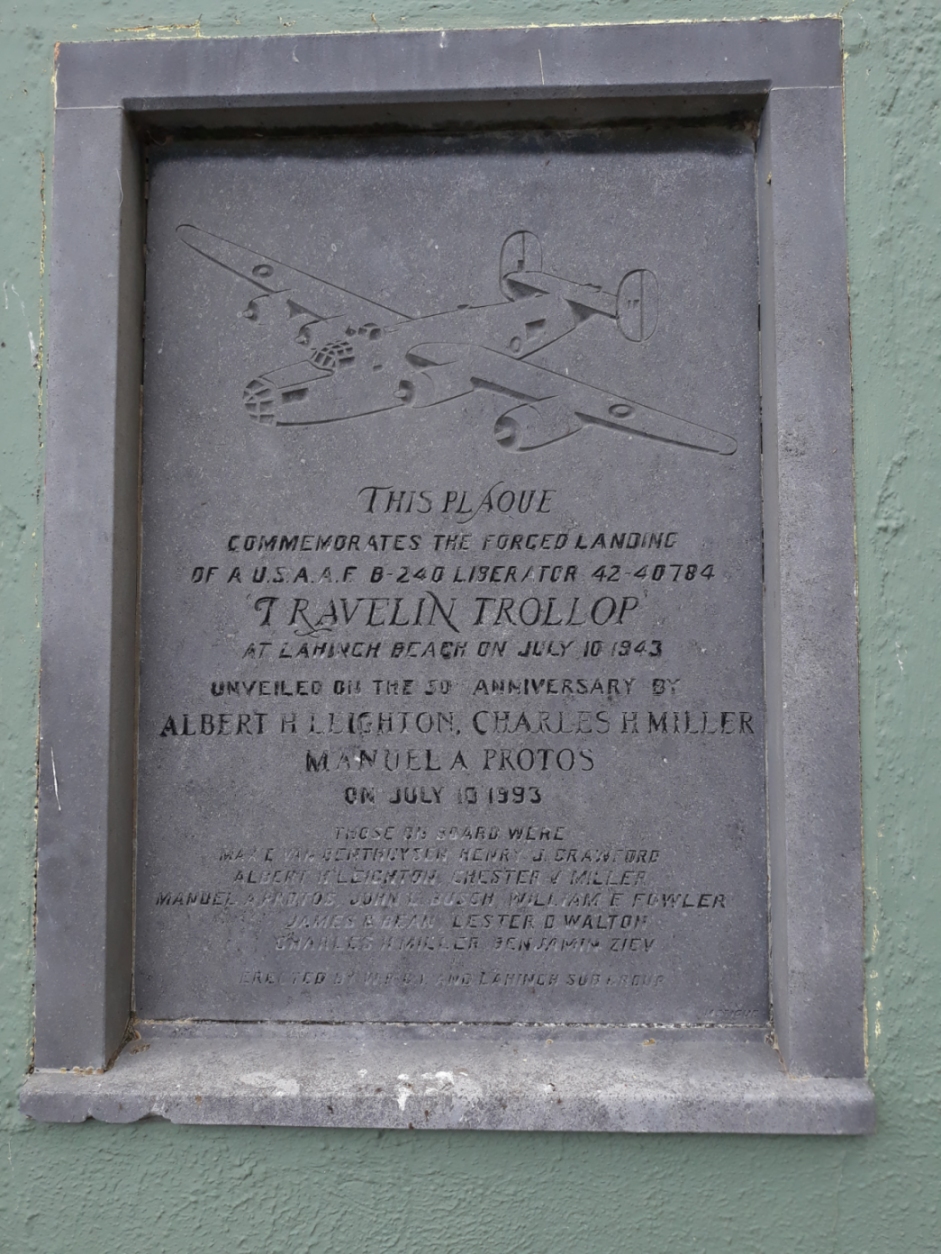
At that time in 1993, the Warplane Research Group of Ireland
published a booklet to go along with the memorial service.
The group had been fortunate enough to have made contact with at
least three crew members and, it seems, also John Busch and
Chester "Chet' Miller.
They had been assigned to the 389th Bombardment Group (Heavy) in 1948 and were on their deployment flight at the time of the accident at Lahinch.
The crew of ten men and one passenger were revealed to be:
2/Lt. Max E Van Benthuysen O-383260, Pilot
2/Lt. Albert H Leighton O-675084, Co-pilot
2/Lt. Manuel A Protos O-738886, Navigator
2/Lt. William E Fowler O-2043684, Bombardier
T/Sgt. Lester D Walton 15102605, Engineer
T/Sgt. Henry J Crawford 33314817, Radio Operator
S/Sgt. Chester V Miller 11089630,
S/Sgt. John L Busch 06998037, Gunner
S/Sgt. James C Bean 18108329 , Gunner
S/Sgt. Charles H Miller 33199009
W/O Benjamin Ziev W-2116388, Passenger
The veterans themselves provided this photo in the 1990's of
the aircraft's crew, taken in the USA prior to their departure
to Europe.
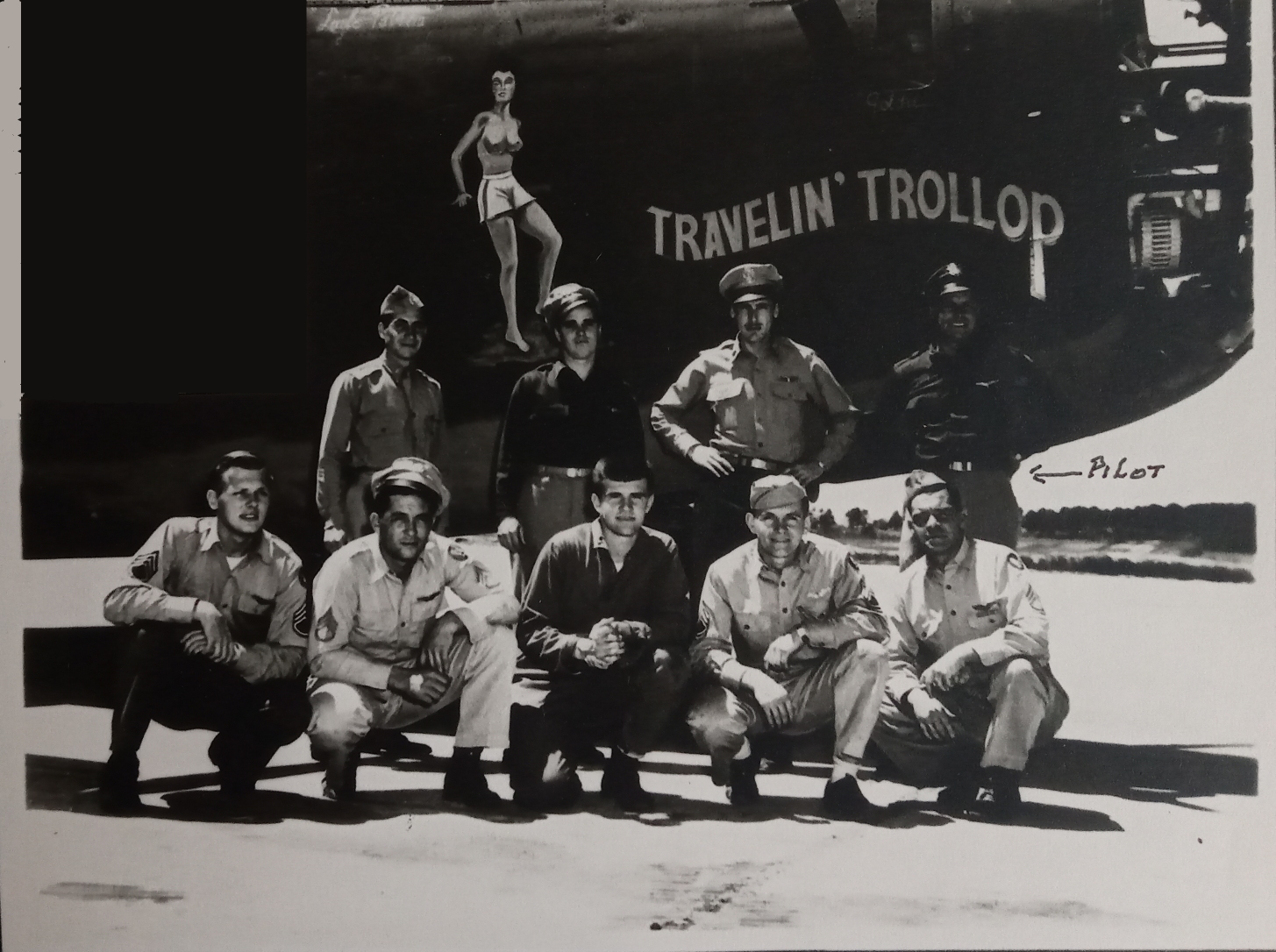
The crew are labeled in the 1993 WRGI booklet as:
Back Row: Protos, Fowler, Leighton, Van Benthuysen
Front Row: Busch, Bean, Chester V Miller, Walton, Crawford
Ziev is not present in this photo as he was a passenger on the
aircraft. Neither Charles H Miller or the man he replaced,
S/Sgt Johnny P Lechmann are in the photo.
The crew had completed their crew training before moving to
Lincoln Field, Nebraska where they were assigned the new
aircraft, 42-40784 around the 10th June 1943. They took
the aircraft on a check flight two days later and another
planned for the following day to Presque Isle, Maine but the
aircraft developed a fuel leak, forcing the crew to land at
Syracuse in New York. They made it to Dow Field, Maine on
June 14th but were forced to remain there for over three weeks
while the aircraft was repaired. It was at this point that
a crew member, S/Sgt Johnny P Lechmann 17086346 was transferred
to a different crew and S.Sgt Charles H Miller joined the Van
Benthuysen crew. It is noted that the early reports sent
back to the US reported Lechmann as still being on the crew and
also a passenger named Major Adelbert D Cross.
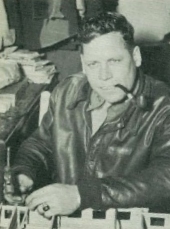 2/Lt. Max E Van Benthuysen O-383260, the
pilot of the Travelin' Trollop, was the son of Herman and Pearl
Van Benthuysen and was born to that couple in Ankeny, Polk
County, Iowa in February 1916. He enlisted in the Army in
January 1935, and, while serving as a Private and then NCO in
the Iowa National Guard, becoming a Quartermaster Corp officer
in the summer of 1939. he had studied in the University of
Iowa prior to entering the Army. The 1940 census finds him
working as a Clerk in a seed company in Des Moines, Iowa.
He transferred to the Army Air Corps during 1942 and trained to
be a pilot in Texas. During this time training, he met and
married a local girl, Nadine Ingleman, in July 1942. The
Des Moines Tribune reported in march of 1944 that he had been
promoted to the rank of Captain. He had reached the rank
of Major in August 1944, returning to a 2/Lt rank after the
war. The Des Moines Tribune in January 1952 reported on
his career: Named this week to
attend Armed Forces Staff college at Norfolk, Va., was Air
Force Lt. Col. Max E. Van Benthuysen, husband of the former
Nadine Ingle-man who is the daughter of the late Mr. and
Mrs. Ralph Ingleman of Des Moines. Van Benthuysen was one of
the small group of men the Military Air Transport Service
(MATS) assigned to Mc Chord air force base, Tacoma, Wash.,
in August, 1950, to operate the North Pacific airlift to
Japan and Korea.
2/Lt. Max E Van Benthuysen O-383260, the
pilot of the Travelin' Trollop, was the son of Herman and Pearl
Van Benthuysen and was born to that couple in Ankeny, Polk
County, Iowa in February 1916. He enlisted in the Army in
January 1935, and, while serving as a Private and then NCO in
the Iowa National Guard, becoming a Quartermaster Corp officer
in the summer of 1939. he had studied in the University of
Iowa prior to entering the Army. The 1940 census finds him
working as a Clerk in a seed company in Des Moines, Iowa.
He transferred to the Army Air Corps during 1942 and trained to
be a pilot in Texas. During this time training, he met and
married a local girl, Nadine Ingleman, in July 1942. The
Des Moines Tribune reported in march of 1944 that he had been
promoted to the rank of Captain. He had reached the rank
of Major in August 1944, returning to a 2/Lt rank after the
war. The Des Moines Tribune in January 1952 reported on
his career: Named this week to
attend Armed Forces Staff college at Norfolk, Va., was Air
Force Lt. Col. Max E. Van Benthuysen, husband of the former
Nadine Ingle-man who is the daughter of the late Mr. and
Mrs. Ralph Ingleman of Des Moines. Van Benthuysen was one of
the small group of men the Military Air Transport Service
(MATS) assigned to Mc Chord air force base, Tacoma, Wash.,
in August, 1950, to operate the North Pacific airlift to
Japan and Korea.
Max passed away in East Machias, Maine on 27 Jan 1979.
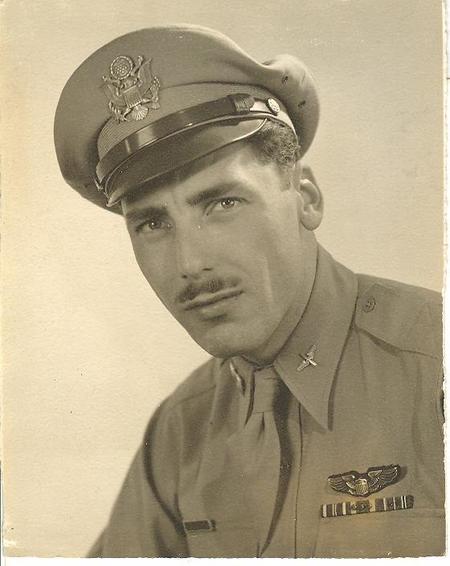 2/Lt. Albert H Leighton O-675084, The
Co-pilot, was a 1939 Army Air Corps pilot and extracts from his
obituary tell his story. He was
born May 6, 1919 in Berlin, New Hampshire and raised in
Pawtucket, Rhode Island. On his 18th birthday (May 6,
1937), he watched the Hindenberg fly over Pawtucket twice
(going north, then south) before it crashed in New
Jersey. In June 1939 he enlisted in the US Army Air
Corps. In 1940, while attending Photo School at Lowry Field
in Denver, Colorado, he met his future wife, Emma (Pat)
Manning.
2/Lt. Albert H Leighton O-675084, The
Co-pilot, was a 1939 Army Air Corps pilot and extracts from his
obituary tell his story. He was
born May 6, 1919 in Berlin, New Hampshire and raised in
Pawtucket, Rhode Island. On his 18th birthday (May 6,
1937), he watched the Hindenberg fly over Pawtucket twice
(going north, then south) before it crashed in New
Jersey. In June 1939 he enlisted in the US Army Air
Corps. In 1940, while attending Photo School at Lowry Field
in Denver, Colorado, he met his future wife, Emma (Pat)
Manning.
He was appointed aviation cadet in June
1942, graduating as a pilot and commissioned second
lieutenant in March 1943. He was stationed in Norwich,
England, and flew bombing missions over Germany. Before
returning stateside, he was awarded the Distinguished Flying
Cross (with three oak leaf clusters); the European African
Middle-Eastern Campaign Medal; two Bronze Stars' and other
WWII campaign ribbons.
One of his memorable experiences while
overseas was the forced landing of his crew's B-24 on the
beach at Lahinch, County Clare, Ireland on July 10, 1943.
Fifty years later, on July 10, 1993, he attended the
unveiling of a commemorative plaque at O'Looney's Pub in
Lahinch, and was asked to give an impromptu speech at the
festivities.
Albert also visited Lahinch in July 1975 with his wife Pat, the Clare Champion of the time carrying an article and photo of the couple, having found a peice of the aircraft on the beach. Albert Leighton passed away on 29 December 2010 in Denver, Colorado.
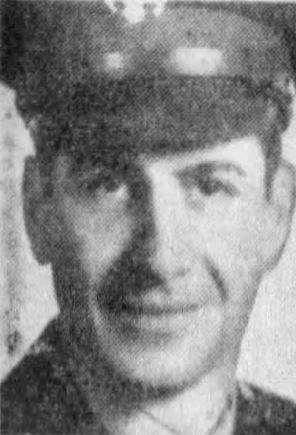 2/Lt. Manuel A
Protos O-738886, Navigator on the bomber was born in May
1919 in North Vandergrift, Pennsylvania to
2/Lt. Manuel A
Protos O-738886, Navigator on the bomber was born in May
1919 in North Vandergrift, Pennsylvania to
The Town Talk from Alexandria, Louisiana recorded of Manuel
upon his return: Manuel A.
Protos of Alexandria completed five years of army service
September 27 when he was released from active duty by the
army air corps in time to enroll as a freshman. He was
promoted to the rank of captain, fought in the Sicily and
Normandy campaigns and the air offensive of Europe to earn
the Air Medal with three Oak Leaf Clusters, the
Distinguished Flying Cross and the Presidential Unit
Citation, His major subject is agriculture.
His local newspaper in 1964, in recalling old stories printed
in war, that in July 1944, they reported on: An award of the
Distinguished Flying Cross has been made to Capt. Manuel A.
Protos of Monessen, navigator on the Liberator "Travelin' Tramp"
He and his family lived in Alexandria, Louisiana after the war
where he attended the State University.
Manuel passed away in July 2001 in Texas and is buried there in Fort Sam Houstan with a veterans headstone listing WW2, Korea and Vietnam as period of service.
2/Lt. William E Fowler O-2043684, The crew's
Bombardier, it appears was born 23 March 1921, in Rimersburg,
Pennsylvania.
Upon his return from Europe, he married a teacher from Bangor,
Maine where the aircraft, 42-40784, had suffered technical
problems and been delayed on its way to Europe.
BANGOR BRIDE— Miss Jean C O’Connor and
Captain William E Fowler were married Monday in a simple
service in the rectory of St John’s Catholic church
Jean C O’Connor Becomes Bride of Capt
W E Fowler
Miss Jean Charlotte O’Connor daughter of Mr and Mrs J
Carl O’Connor of Bangor and Captain William E Fowler son of
Mr and Mrs William A Fowler of Youngstown Ohio were married
Monday In the rectory of St John’s Catholic church Rev
Joseph H Butler officiated The couple was attended by James
J McAloon and Miss Rosaline H McAloon The bride wore a green
gabardine suit with a corsage of yellow roses Miss McAloon
wore a gray suit with a corsage of red roses Mrs Fowler was
graduated from Bangor High school In the class of 1942 and
for the past' two years has attended Farmington Teachers’
college Captain Fowler attended the Youngstown Ohio schools
and the University of Ohio before entering the Army Air
Forces He has Just returned from overseas duty where he was
awarded the DFC Air Medal and also the Silver Star. They
will spend this week in Youngstown, Ohio and then will be In
Miami Fla where Captain Fowler has been assigned
William's obituary from 2013 again tells his story very well,
with the only item of note being the mention of the Dow airfield
stopover being in 1942 instead of 1943: William E. Fowler, 92, major, U.S. Air
Force, retired, of Bar Harbor, passed away Aug.11. Bill was
born March 23, 1921, in Rimersburg, Pa., to Melvin Ray
Fowler and Edna Joy (Mortimer) Fowler.
Bill grew up in Youngstown, Ohio, and enlisted in the
Army Air Forces in 1940 at the age of 19. He served on
active duty in three wars -- World War II, Korea,and Vietnam
-- and earned the Bronze Star and National Defense Service
Medal. In 1942, Bill was headed to England to serve with the
Eight Air Force when his B-24 developed engine trouble
resulting in a two-week delay at Dow Field in Bangor for
repairs. There he met the love of his life, Jean O'Connor.
They corresponded for two years and married when he returned
from England. After several years, Bill decided to make the
Air Force his career and he and Jean travelled extensively
with their three children (including tours in Germany and
Japan). During his 25-year military career, Bill earned a
degree in horticulture at the University of Maine and a
business degree at Indiana University. Bill retired in 1967,
they moved to Augusta, and he worked for 20 years as an
assistant state horticulturist.
T/Sgt. Lester D Walton 15102605, The aircraft's
Engineer, was an Indiana native born in Feb 1922.
Newspapers carried news in November 1942 of his graduation from
airplane mechanic school at Keesler Field, Mississippi.
His award of a Distinguished Flying Cross was published in state
newspapers in August 1944.
He passed away in Feb 1993 in Indiana.
T/Sgt. Henry J Crawford 33314817, Radio Operator hailed
from Pennsylvania, born in December 1912, to Susan and James
Crawford in East Norwegian Township, Pennsylvania. His
local newspaper the Potsville Republican reported on his service
in June 1944, noting that he had been awarded a distinguished
flying cross
He passed away in Chester, Pennsylvania on 14 April 1948.
Newspaper recorded he collapsed while out walking in the town of
Chester. The Pottsville Republican printed an obituary at
the time reading: HENRY J.
CRAWFORD Henry J. Crawford, son of Mrs. Susan and the late
James Crawford. E. Norwegian Township, died 1 suddenly on
his way home from work at Chester. A veteran of World War
II, he served in the Air Force. He was the organizer of the
Veterans of Foreign Wars Post No. 4845, at Essington, and
served as its commander. To survive besides his mother, he
leaves these brothers and sisters: Mrs. Catherine Emplit,
John and Thomas Crawford, Mrs. Jos Krupla, Mrs. Fred G.
Davison, Mrs. Lillian Dean, and a number ; of nieces and
nephews. The funeral took place Saturday in Chester, with
burial in Rural Cemetery.
S/Sgt. Chester V Miller 11089630, came from Revere,
Massachusetts and was born in 1922. His parents were
Lilian and Edward and his draft card in 1940 shows him as
employed at the Naval Yard in Boston.
Chester, or Chet, as he was known, visited Lahinch in September
2000, but also made a short visit in 1983. He was unable
to make the 1993 unveiling.
Chester passed away in Aug 2019 in Danvers, Massachusetts.
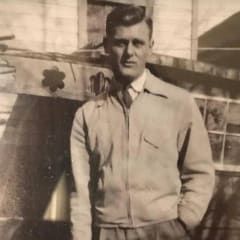 S/Sgt.
John L Busch 06998037, an Air Gunner, born in Ashley
Penne, Pennsylvania, to Clementine and Stanley Busch on 22 June
1921. He had joined the forces in December 1939, lying
about his age, being only 16 years old.
S/Sgt.
John L Busch 06998037, an Air Gunner, born in Ashley
Penne, Pennsylvania, to Clementine and Stanley Busch on 22 June
1921. He had joined the forces in December 1939, lying
about his age, being only 16 years old.
His tour of duty was completed in the Autumn of 1944 and he
returned to the United States in October of 1944. He
reenlisted in the Army Air Forces in 1946 for a year and lived
in Utah for the remainder of his life.
John passed away on 27 April 2021 in Salt Lake City,
Utah. He had featured in his local city media in 2021 in
relation to his having survived the COVID pandemic as well as
the second world war.
S/Sgt. James C Bean 18108329 , Gunner. James was
born on the 16 Mar 1917 in Stilwell, Oklahoma to Pearl and Mack
Bean.
The 1940 census find him with his first wife in Lompoc,
California, working as a Mill Labourer in a diatomaceous
mine. Registering for the draft back in Oklahoma, he was
reported in a local newspaper, the Westville Record, as
qualifying as an aerial gunner in August 1942 from the gunnery
school at Harlingen, Texas.
He gave an address in Tulsa, Oklahoma to the Irish Army.
Various newspaper from Oklahoma in the summer of 1944 reported
on his award of three Oak Leaf Clusters to the Air Medal and his
completion of 23 missions. He remained in the services
until 1963 though in the 1950 Federal census he is enumerated as
being unemployed. His headstone lists both WW2 and Korea
as wars served during.
James lost a brother, Dale E Bean, a paratrooper with the 504th
Parachute Infantry Regiment during the Battle of the Bulge on 20
December 1944.
James passed away on 6 September 1979 in Topeka, Kansas.
S/Sgt. Charles H Miller 33199009
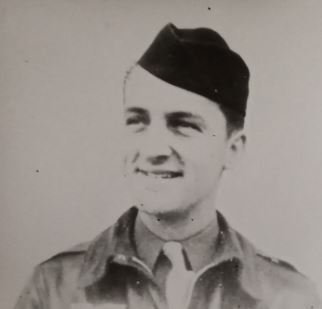 Charles was born in May
1916 to Benjamin H and Elva R Miller in Hampstead, Maryland.
Charles was born in May
1916 to Benjamin H and Elva R Miller in Hampstead, Maryland.
Charles married in June 1942, The Morning Herald of Hagerstown
reported on the happy couple and that Sergeant Miller was then
stationed in Miami, Florida with the 563rd Squadron, USAAC.
On the 7 Jun 1943 the The Daily Mail from the city reported that he had returned to the Army Air Base at Lowry Field, Denver, Colorado after spending a weeks leave with his wife and with his parents in Hampstead.
The Daily Mail newspaper from Hagerstown, Maryland on 21 Aug
1943 carried the following letter: Staff Sergeant Charles H Miller has arrived
safely overseas, according to a recent letter received by
his wife, Mrs Helen Artz Miller, of this city. he
would like to hear from his friends at the following
address: ASN 33199009, 389th Bomb Group 565th Bomb
Squadron, APO 634, c-o Postmaster, New York City, N.Y.
A long article on Chester's wartime experiences and the Lahinch
landing was recorded in the Baltimore Sun, newspaper.
He passed away on 19 October 1994, the year following the
festivities in Lahinch. His Beneficiary Identification
Records Locator Subsystem (BIRLS) entry indicates an enlistment
in 1935 through to 1939, while his grave marker in Hampstead
records both US Army Air Corps and US Marine Corps service.
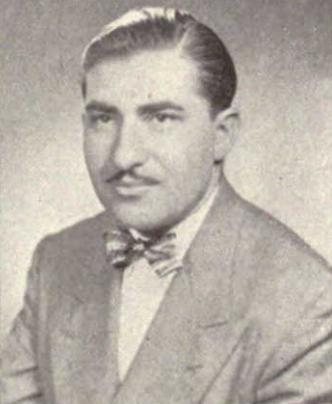 Warrant
Officer Benjamin Ziev W-2116388 was flying on board the
aircraft as a passenger only. It was not unusual for a
person deploying overseas to be placed on a bomber going
overseas. Benjamin was the son of Sarah and Harry
Ziev from Easton, Philadelphia and was born in Montpelier,
Vermont on 26 July 1915. He also had enlisted before the
start of the war at Langley Field in Virginia. The Daily
Press newspaper from Newport News, Virginia published a number
of his postings prior to 1940, including being a Apprentice
Clerk in the Headquarters and Headquarters Squadron of 2nd Wing
in August 1937. He was reported a year later returning to
the 96th Bomb Squadron after several months training at the
Chanute Field technical training school. He received a
grade promotion a year later and in April 1940, was recorded in
the paper as having reenlisted, being then an Air Mechanic First
Class. The Morning Call from Allentown, Pennsylvania on 31
July 1943 printed a short article about the three Ziev brothers
and their whereabouts.
Warrant
Officer Benjamin Ziev W-2116388 was flying on board the
aircraft as a passenger only. It was not unusual for a
person deploying overseas to be placed on a bomber going
overseas. Benjamin was the son of Sarah and Harry
Ziev from Easton, Philadelphia and was born in Montpelier,
Vermont on 26 July 1915. He also had enlisted before the
start of the war at Langley Field in Virginia. The Daily
Press newspaper from Newport News, Virginia published a number
of his postings prior to 1940, including being a Apprentice
Clerk in the Headquarters and Headquarters Squadron of 2nd Wing
in August 1937. He was reported a year later returning to
the 96th Bomb Squadron after several months training at the
Chanute Field technical training school. He received a
grade promotion a year later and in April 1940, was recorded in
the paper as having reenlisted, being then an Air Mechanic First
Class. The Morning Call from Allentown, Pennsylvania on 31
July 1943 printed a short article about the three Ziev brothers
and their whereabouts.
Chief Warrant Officer Benjamin Ziev,
son of Mr. and Mrs. Harry Ziev, of 764 Washington St.,
Easton, is serving his second enlistment in the Army and is
at some unknown location with a unit of the Army Air Forces.
Donald Ziev, a brother, stationed at Camp Blanding, Fla.,
entered the service March 30, and is with the field
artillery. As a civilian, he was employed by the State
Highway department. A third brother. Sergeant Israel Ziev is
stationed with a bombardment squadron at Gulfport, Miss.
He returned back to America at the end of November 1943 and was
discharged in June the following year. He was still
required to register for the draft, doing so in June 1944, with
the registration card noting that he had been in the services
during 1940 when most men registered for the draft. His name
remains listed in Army registers on the retired lists as late as
1972. His photo on this page comes from the year book of
Temple University, Philadelphia in 1948.
Benjamin passed away on the 4th April 1993, the year of the
memorial in Lahinch.
Compiled by Dennis Burke, 2022. Thanks to Martin Gleeson
for assistance with this page.
